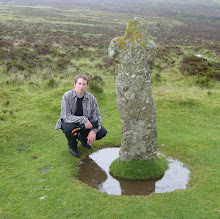



Highgate Cemetery in London was described by the poet John Betjeman as "Victorian Valhalla". There are many graves of famous artistic and literary people, most notably the Pre Raphaelites. I found this grave of Frederick Warne, publisher of Beatrix Potter. As can be soon from the photo, the graves are very overgrown and some almost in perpetual shade.
 However what impressed me most about Highgate was the melancholy beauty of its angels. I am going back there at some point to explore the monuments more thoroughly. Many are protected by English Heritage for their artistic and architectural merit.
However what impressed me most about Highgate was the melancholy beauty of its angels. I am going back there at some point to explore the monuments more thoroughly. Many are protected by English Heritage for their artistic and architectural merit.The cemetery was rich in flora and fauna. We saw squirrels, a robin perched on a headstone, and I was delighted by the display of snowdrops which carpet the ground and grow through the cracks in some of the older stones. I find this reassuring as it seems to represent rebirth or growth and the signs of early spring.














